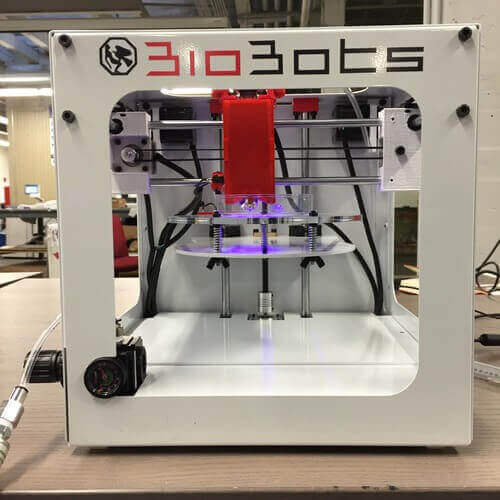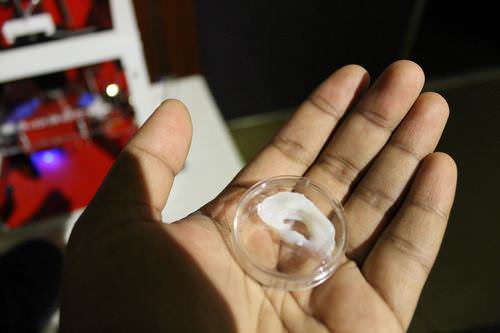Imagine a machine that prints Van Gogh’s ear in replica, and you’ll understand the concept behind biotech startup BioBots’ 3D printer. Demoed on stage at TechCrunch Disrupt NY, the technology combines hardware, software, and wetware to artificially build living tissue structures.

The field of biofabrication isn’t new. A decade of research exists building living tissues. The concept of interest is moving from large, legacy devices to smaller desktop 3D printers. Cost effective and portable, BioBots’ 3D printer uses special ink when combined with biomaterials and living cells, builds 3D living tissue and miniature human organs.
Printing replacement parts for humans isn’t an option right now. Biofabrication does have its advantages by producing bone scaffolding which helps with recovery. It’s also a promising alternative to animal cell testing much to the delight of animal experimentation objectors worldwide.

BioBots sees its printers helping out pharmaceutical companies that rely on 2D tissues or animals to do clinical drug testing on. 3D living issue is more complex and used to develop compounds for clinical settings. Taking cells from patients and building 3D tissues specifically for the patient is a possibility in the future. It provides better and more specialized care for a patient-specific disease.
The company began in the dorm at the University of Pennsylvania where two of the co-founders were ready to graduate. They wanted to incorporate the spirit of the maker movement and bring it to the world of genetic engineering and tissue engineering affordably. The company’s business model involves selling different base inks used for printing biomaterials.
Other devices use pressure or UV light which damages living cells. BioBots’ printer uses visible blue light as it cures biomaterial structures. It doesn’t have the detrimental effects UV light has which means more accuracy while testing.
License: The text of "BioBots 3D printers make biofabrication accessible and affordable" by All3DP is licensed under a Creative Commons Attribution 4.0 International License.